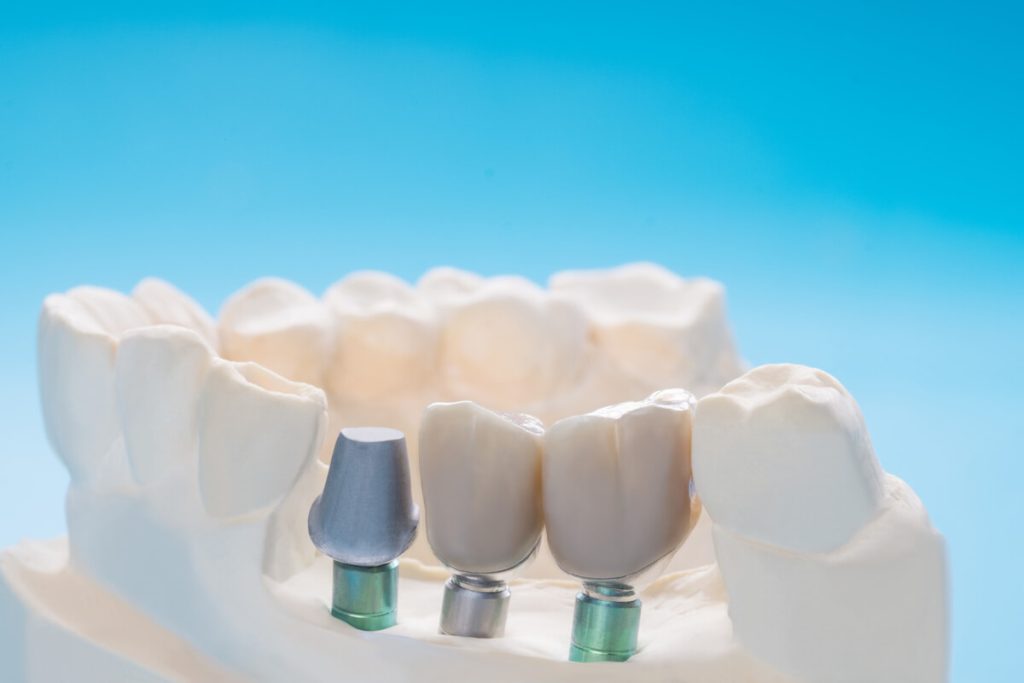How Long Does The Dental Implant Procedure Take?

Dental implants are one of the most excellent methods for replacing missing teeth. They look, feel and function like your teeth, and you don’t have to worry about them slipping or falling out like dentures.
Furthermore, unlike a dental bridge, they do not compromise the structure of surrounding teeth. The only downside to dental implants is that they’re not a quick option, and you must be patient throughout the treatment process.
How long does the dental implant procedure take? It varies. But let’s look at the various stages and what may affect how quickly the treatment is completed.
What typically affects how long the dental implant procedure takes?
Although the surgical implant procedure is usually completed in a couple of hours, this is only part of the process. Generally, the procedure, from initial consultation to completion, with the attachment of an artificial tooth, takes around six months. For some patients, it will be longer – particularly if they need additional treatments to get their mouths healthy before the dental implant procedure, such as treatment for gum disease or tooth decay.
Others may find the procedure takes even longer—if, for example, they have bone loss in the jawbone, which means there is insufficient bone to hold the implant. In these circumstances, a dentist can augment bone with a bone graft. However, this increases the duration of the overall implant procedure and means it could take up to a year or longer to complete.
What are the Various Stages of the Dental Implant Procedure?
Examination & Consultation
This initial appointment may take an hour or two. Your Leichhardt dentist thoroughly examines your mouth to ascertain your suitability for dental implants and to check that the mouth is healthy with no active signs of periodontal disease or tooth decay.
Additional examinations, like CT scans or X-rays, may be taken to assess your jawbone density and identify the location of nerves. You can ask questions during the consultation, discuss treatment options, and raise concerns.
If dental implants are deemed a good option, a treatment plan is created, and you will be given a date for implant surgery.
Dental Implant Surgery
The surgical procedure for dental implants varies depending on your implant type and how many. As a general guide, a single implant takes up to an hour to place
Most surgeries are carried out with a local anaesthetic, but conscious sedation may also be considered, particularly for nervous patients. Once the anaesthetic has been administered, the surgery starts with an incision in the top of the gum where the missing tooth once was.
This gives access to the jawbone, where the dentist drills a hole to accommodate the dental implant. The implant is a tiny, screw-shaped piece of titanium, a metal readily accepted by the human body and is biocompatible. Once inserted, the gum is closed with sutures to cover the implant.
The area where the implant and bone fuse (osseointegration) is left to heal over the next few months. This process forms a solid platform supporting an artificial tooth (crown). It can take between 3 and 6 months for osseointegration to occur and for an abutment to be placed that connects the implant post to the artificial tooth replacement.
Attachment of Crown
Once osseointegration is complete, your Leichhardt dentist will place an abutment—a connector between the implant post and the crown. The abutment is attached to the implant, and impressions of your mouth are taken to produce a personalised crown that blends in with your original teeth.
Finally, the dentist secures and cements the crown onto the abutment. This completes the dental implant procedure, giving you a fully functional, natural-looking tooth.
How Long Does Dental Implant Procedure Take?—The Bottom Line
It varies, but 3-6 months from start to finish is a reasonable ballpark, although you need to remember that it may be longer. For patients requiring additional treatments, such as bone grafting or gum disease management, the process may take longer—up to a year or more. Patience is critical to ensuring the success of the implant and the longevity of your restored smile.
Dental Implant in Leichhardt
If you’re considering dental implants, the first step is a consultation to determine your suitability. At My Local Dentists, we’re here to guide you through every step, from your initial examination to the final placement of your new tooth.
Contact us at (02) 9171 0840 and claim your FREE Dental Implants Consultation.
We are located at Shop 48, Leichhardt Marketplace Shopping Centre, 122-138 Flood Street in Leichhardt.
